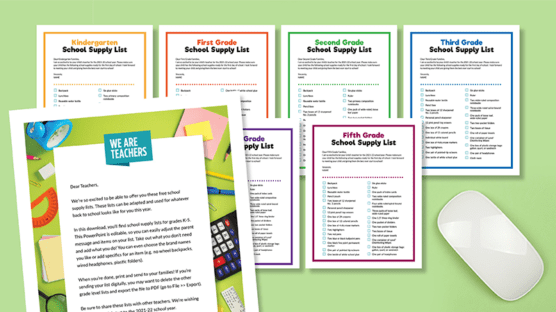
What are the signs of vaping in schools?
“Some of the signs that young people may be vaping include frequently asking to go to the bathroom or putting their hoodie string into their mouth. Some of these products are so little that you can stick it into the hood of your hoodie, reach over, and take a hit.” Teachers who spot e-cigarette use should intervene.
How can I teach my students about vaping in school?
Student education around vaping can take many forms: health information (sort of a Vaping 101), a social-emotional learning approach (focused on good decision-making), and/or peer-to-peer education. For support resources, check out the FDA’s “The Real Cost” Youth E-Cigarette Prevention Campaign. Educate staff about vaping
What is vaping know the truth?
Available free of charge to teachers, students, administrators, parents and the public at large, Vaping: Know the truth is a self-administered interactive course with peer-to-peer, digital instruction geared to high school students and available to teachers of other grade levels.
Is youth vaping impacting the education system?
Teachers have reported youth vaping is impacting their ability to educate students because of frequent class interruptions, decreased student focus and few resources to help them address the problem, according to previous Truth Initiative ® research.
What is the most popular tobacco product among high school students?
Should schools have e-cigarette policies?
Can students vape in class?
About this website

School takes steps to stop student vaping - Village Life
After what Oak Ridge High School Principal Aaron Palm called “high levels of vaping use on campus,” the school staff is working to stop the trend by closing all but two school restrooms during class times and during lunch a campus monitor is outside each restroom, monitoring who enters and how many students are in the restroom at one time.
Vaping in Schools: A Challenge For Educators - Halpern & Scrom Law PLLC
In New York, the use of e-cigarettes and vaping devices is prohibited in all public and private elementary or secondary schools, including within one hundred feet of the entrances, exits or outdoor areas of the school.
The Student Vaping Crisis: How Schools Are Fighting Back - Education Week
The district is backing a series of measures before the Boulder City Council that would ban the sale of flavored nicotine and tobacco products, increase the minimum age to buy nicotine and tobacco ...
What Is Vape?
Electronic cigarette (e-cigarette) use is an emerging problem among youth, and is commonly referred to as ”vaping” (CATCH, 2020; Selekman, 2019).
Not "Just Water Vapor"
When the aerosol produced by e-cigarettes is mistakenly called “water vapor,” it implies that it is safe and harmless, which it is not. Unlike water vapor, aerosol produced by e-cigarettes contain particles, chemicals, and elements that may cause a variety of negative health effects when inhaled (CATCH, 2020; Walley et al., 2019).
Nicotine Harms Students
False advertising leads people to believe that e-liquids do not contain nicotine. However, one study found that nearly 99% of e-liquids contain nicotine, even when they were labeled as “nicotine-free" (Marynak et al., 2017).
E-cigarettes & Substance Use
Due to the negative consequences of using e-cigarettes, the Center for Disease Control and Prevention (CDC) recommends that youth and young adults never try them and to quit if they are using them (CDC, 2020).
Associated Lung Illnesses
Lung Illnesses include asthma or bronchitis as well as more severe lung issues (Stalgaitis et al., 2020). E-cigarette use among youth is known for its association with certain lung illnesses. The flavoring chemical, diacetyl, is safe to ingest but not inhale through the lungs like it is through e-cigarette use (CATCH, 2020; Vas et al., 2019).
Signs & Health Impacts of Student Vape Use
Students should be taught about the side effects of e-cigarette use, and these side effects should not be dismissed as “normal teenage behavior.” Cognitive symptoms include difficulty concentrating as a result of nicotine dependence or withdrawal symptoms (CATCH, 2020; HHS, 2016).
What Can Teachers Do?
Teachers have the unique opportunity to both monitor and influence student behaviors at school (Sallis et al., 2015) and have been specifically identified by the U.S. Surgeon General as crucial stakeholders to address youth e-cigarette use (HHS, 2016). Teachers can be effective in this role by:
What is the most popular tobacco product among high school students?
E-cigarettes are the most popular tobacco product among high school students and they are on the rise with elementary children, so it’s no surprise that they’ve made their way onto school campuses. E-cigarettes are especially appealing to kids, and, since many look like everyday objects, they’re easy to hide.
Should schools have e-cigarette policies?
You should specifically address e-cigarettes in your policy, but make sure they aren’t punitive. This isn’t as much a discipline issue as a rehabilitation one. Instead of exclusionary discipline like in-school suspension, consider having students participate in interactive educational sessions like INDEPTH. Schools also need to have programs and counseling available on-site to help kids quit and support them through that process. This K-12 model policy is a great place to start.
Can students vape in class?
Students share that it is fairly easy to discreetly vape in class, and that’s a huge problem. However, it can be mitigated with some staff training. All administrators, teachers, and staff should be familiarized with the different types of products on the market (some even look like watches!), the harm they cause to lungs and developing brains, and the susceptibility of adolescents to addiction.
How does vaping affect teachers?
Teachers have reported youth vaping is impacting their ability to educate students because of frequent class interruptions, decreased student focus and few resources to help them address the problem, according to previous Truth Initiative ® research.
How many high school students are vaping in 2020?
With youth vaping continuing at epidemic levels – about one in five high school students were using e-cigarettes in 2020 – schools and communities have an important role to play in reaching students with the information they need to make informed choices, as well as tools to quit if they are already vaping. YouTube.
Do young people want to quit vaping?
Most young e-cigarette users want to quit vaping – a new Truth Initiative survey found 60% of young current e-cigarette users surveyed want to quit vaping within the year – signaling a pressing need to provide resources to support them.
Increased Distractions in the Classroom
In October 2019, the Truth Initiative conducted an online discussion with teachers to understand how youth vaping is affecting their workplace and the students’ academics. One of their concerns was the increase in distractions caused by vaping. [3]
Teachers Feel Powerless Over Ineffective School Vaping Policies
According to the Truth Initiative, half of the teachers surveyed felt as though their school vaping policies were ineffective. Some of the reasons for this include difficulties in detecting vaping, lack of prioritization of the issue, limited resources in tackling the issue, and a lack of parental support. [3]
Decreased Trust Between Staff and Students Affects School-Wide Culture
Since school policies are often ineffective at preventing vaping, students are still sneaking around and using their e-cigarettes in secret. This can lead to a lack of trust between students and staff. When there is not trust within student-teacher relationships, other larger issues can go undetected, such as trouble in the home or abuse.
Vaping and its Effect on Academic Performance
The Truth Initiative discovered that nearly 33% of teachers thought vaping affected their students’ academic performance. [3] Teachers reported noticing both nicotine dependence or addiction and other behavioral changes.
Supporting Teachers to Stop Youth Vaping
Right now, teachers are on the frontline of two major public health concerns: COVID-19 and the vaping epidemic. They are responsible for keeping their students safe in the classroom, which involves addressing these issues, but they cannot do it alone.
How many vaping devices were spotted in the first teacher test?
The first teacher that came in spotted only three of the 14 vaping devices. The best anyone did with the test was correctly spotting five out of 14.
Who put parents to the test to see if they could find the hidden vaping devices?
NBC’s Vicky Nguyen put parents and teachers to the test to see if they could find the hidden vaping devices. It didn't go so well.
How many days a month do high schoolers use e-cigarettes?
According to the National Youth Tobacco Survey, of high schoolers who currently use e-cigarettes, 39 percent use them 20 or more days per month and 23 percent use them daily. These disturbingly high rates of frequent and daily e-cigarette use suggest strong dependence on nicotine.
What percentage of high schoolers use disposables?
Of the youth who currently use e-cigarettes, 26.5 percent of high schoolers and 15.2 percent of middle schoolers use disposables. Some common disposable e-cigarettes resemble USB sticks and may appear in bright colors.
What is an e-cigarette?
You probably know that an e-cigarette (also called a vape) is a battery-powered device that heats a liquid nicotine mixture, often including flavors, into an aerosol that the user inhales. Several of the e-cigarettes most popular with youth resemble USB flash drives and can be relatively odorless.
What is disposable e-cigarette?
Parents and teachers might also want to be aware that disposable e-cigarettes are becoming more popular with youth. A disposable e-cigarette is designed for a single use. Some of these disposable products cost as little as a few dollars each, making them more affordable to teens.
Can a teen use an e-cigarette?
A disposable e-cigarette can’t be recharged or refilled; a teen does not have to charge it or necessarily hide it in the house. Teens can obtain, use, and throw away these products. In addition, many disposable e-cigarettes come in flavors that appeal to youth.
Can kids buy e-cigarettes online?
Some kids are buying e-cigarettes online and having them delivered without their parent’s knowledge or consent. FDA has taken action to remove these products from the marketplace but know that some e-cigarette products can hide in plain sight. Be on the Lookout for Disposable E-Cigarettes.
Is the FDA removing puff bars?
FDA has warned several manufacturers, including the makers of the popular Puff Bar disposable e-cigarette, to remove their illegal products from the U.S. market. FDA will continue to take action against any e-cigarette product that targets youth, including flavored disposable e-cigarettes and other e-cigarettes that do not have FDA authorization ...
What is the most popular tobacco product among high school students?
E-cigarettes are the most popular tobacco product among high school students and they are on the rise with elementary children, so it’s no surprise that they’ve made their way onto school campuses. E-cigarettes are especially appealing to kids, and, since many look like everyday objects, they’re easy to hide.
Should schools have e-cigarette policies?
You should specifically address e-cigarettes in your policy, but make sure they aren’t punitive. This isn’t as much a discipline issue as a rehabilitation one. Instead of exclusionary discipline like in-school suspension, consider having students participate in interactive educational sessions like INDEPTH. Schools also need to have programs and counseling available on-site to help kids quit and support them through that process. This K-12 model policy is a great place to start.
Can students vape in class?
Students share that it is fairly easy to discreetly vape in class, and that’s a huge problem. However, it can be mitigated with some staff training. All administrators, teachers, and staff should be familiarized with the different types of products on the market (some even look like watches!), the harm they cause to lungs and developing brains, and the susceptibility of adolescents to addiction.
